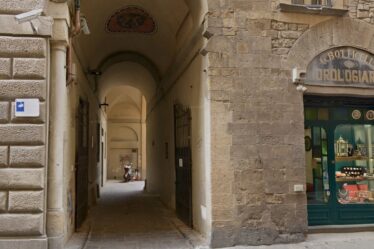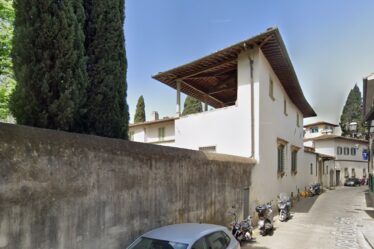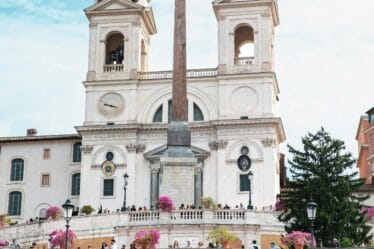

The entryway to the “Tivoli” garden was visible on the right side of a stairway with two different types of towers on either side as we approached Villa Cora from Viale Machiavelli in the direction of Piazzale Michelangelo. Yes, Florence had a garden that was somewhat modeled after a Vauxhall garden; the Vauxhall trend originated in England and expanded throughout Europe as a result of the newly emerging bourgeoisie’s refusal to blend in with the many forms of popular amusement. The exquisite Villa d’Este is located in the city of Tivoli, which is the source of the name given to all the gardens across Europe.
When Florence was named the capital of the Kingdom of Italy on February 3, 1865, there was undoubtedly much upheaval and a need to adjust the city to its new position. Among the several works, Mr. Maurizio Meyeri asks the Municipality of Florence in March 1869 to construct a “amusement park” at Piazzale Galileo along the Viale de ‘Colli. However, it takes some time for the approval to be granted, and then on May 18, 1871, the park is officially opened by the Meyeri after considering the cost and scope of the work that has to be done.
A carousel, a music hall, the Caffè Chantant, an oriental-style market, a theater, a brewery, shoots on the target, and a gazometer were all located inside the park. A gate surrounded the garden, and the Viale de ‘Colli main entrance served as a ticket booth (tickets were 50 cents for adults and 30 cents for boys, an unthinkable price for Florence in those days). However, the park’s glory was short-lived. The Tivoli coffee shop owners explained that the low attendance was caused by the existence of other city recreation areas, like the Boboli Gardens and Cascine Park, which offered free admission, as well as the park’s difficult accessibility by public transportation.
The move of the capital to Rome and the major issues that developed between the three members were likely also the coup de grace. The initial closure occurred in 1873, but the actual procedures for dividing the property between the Municipality and private owners didn’t start until 1874. The two cases of the main entrance are now magnificently visible following a 150 thousand euro repair. Work on the project began in 2017 and was completed in 2019. While some structures remain on private land, others are still visible.



